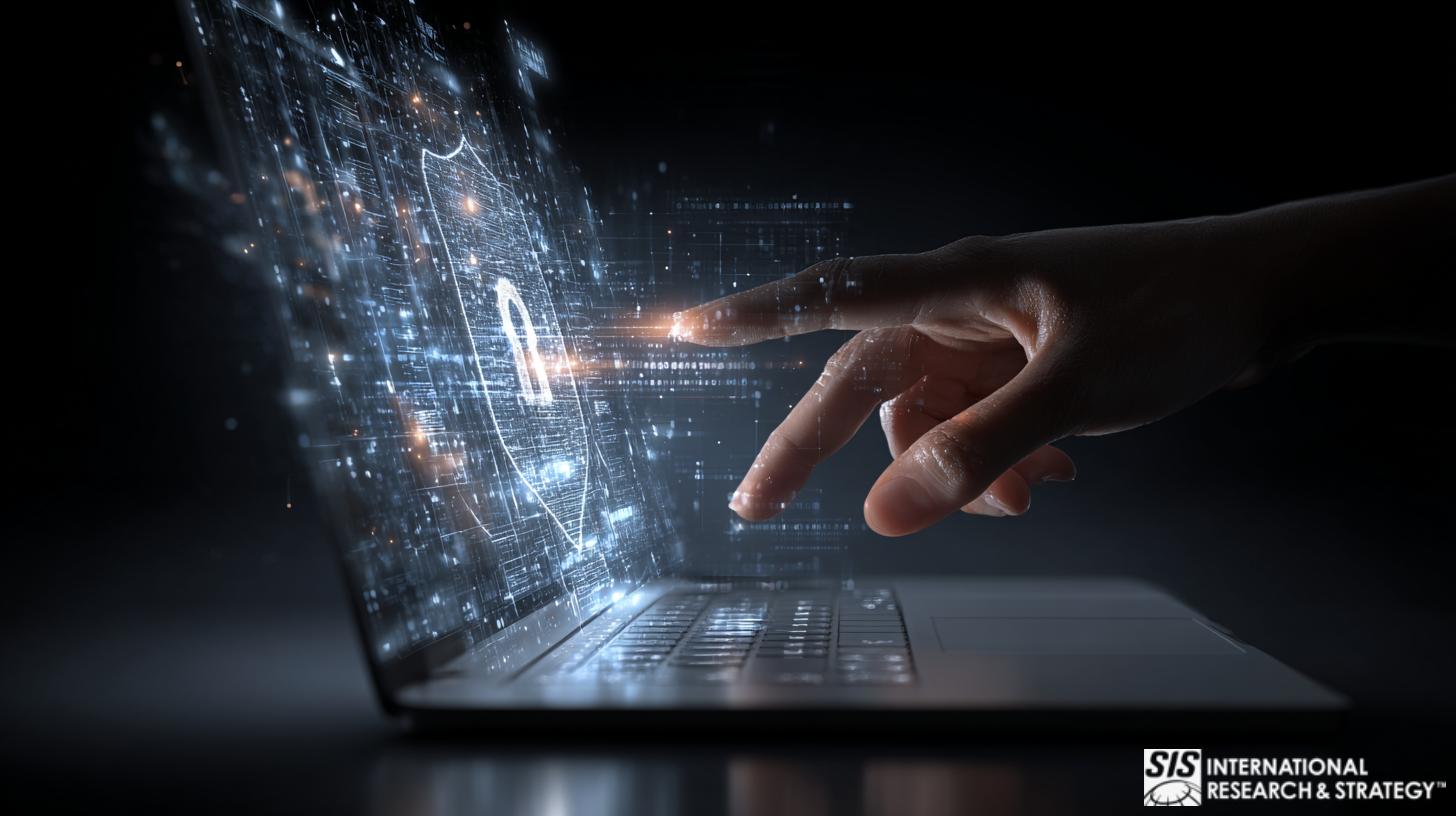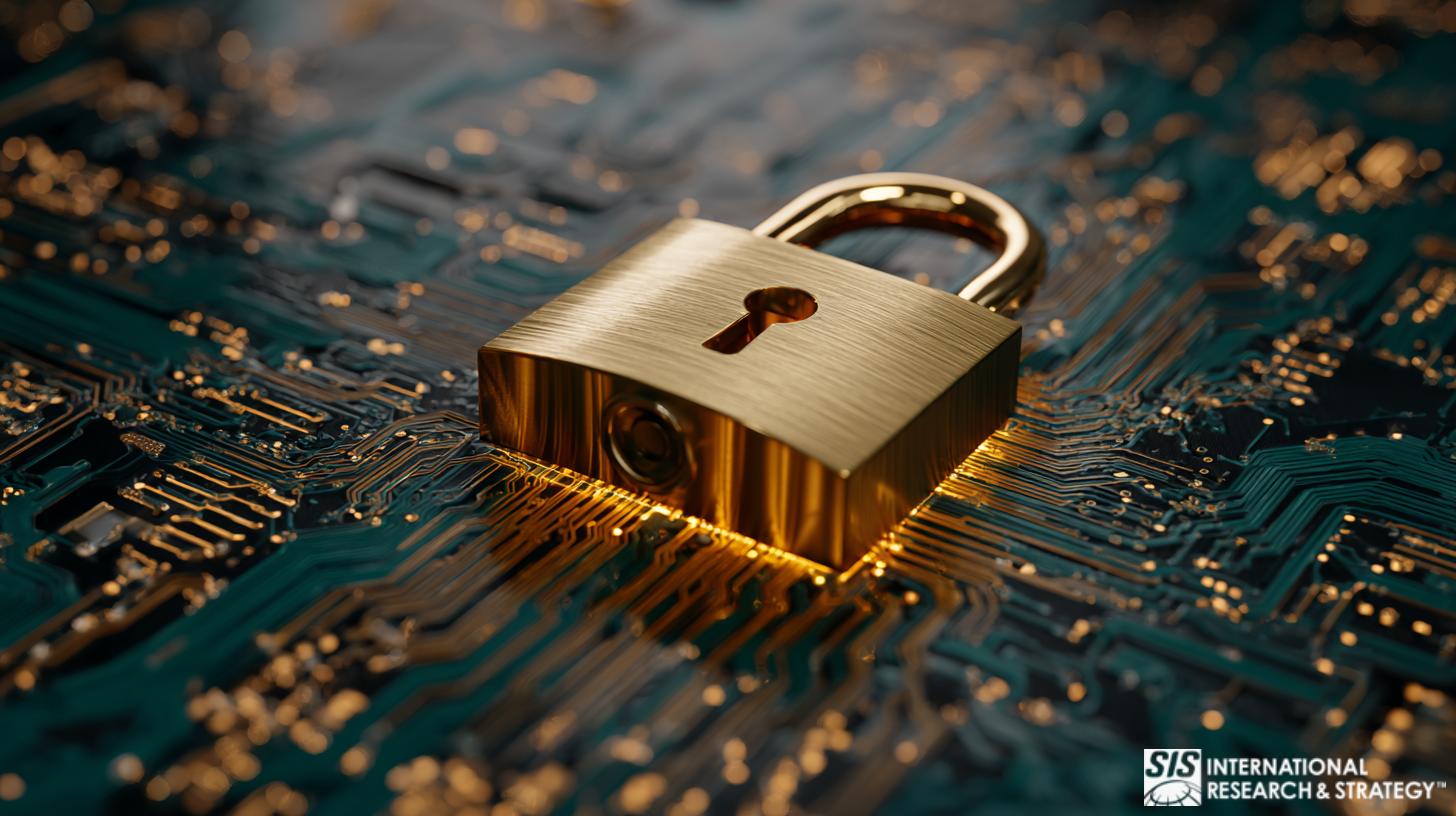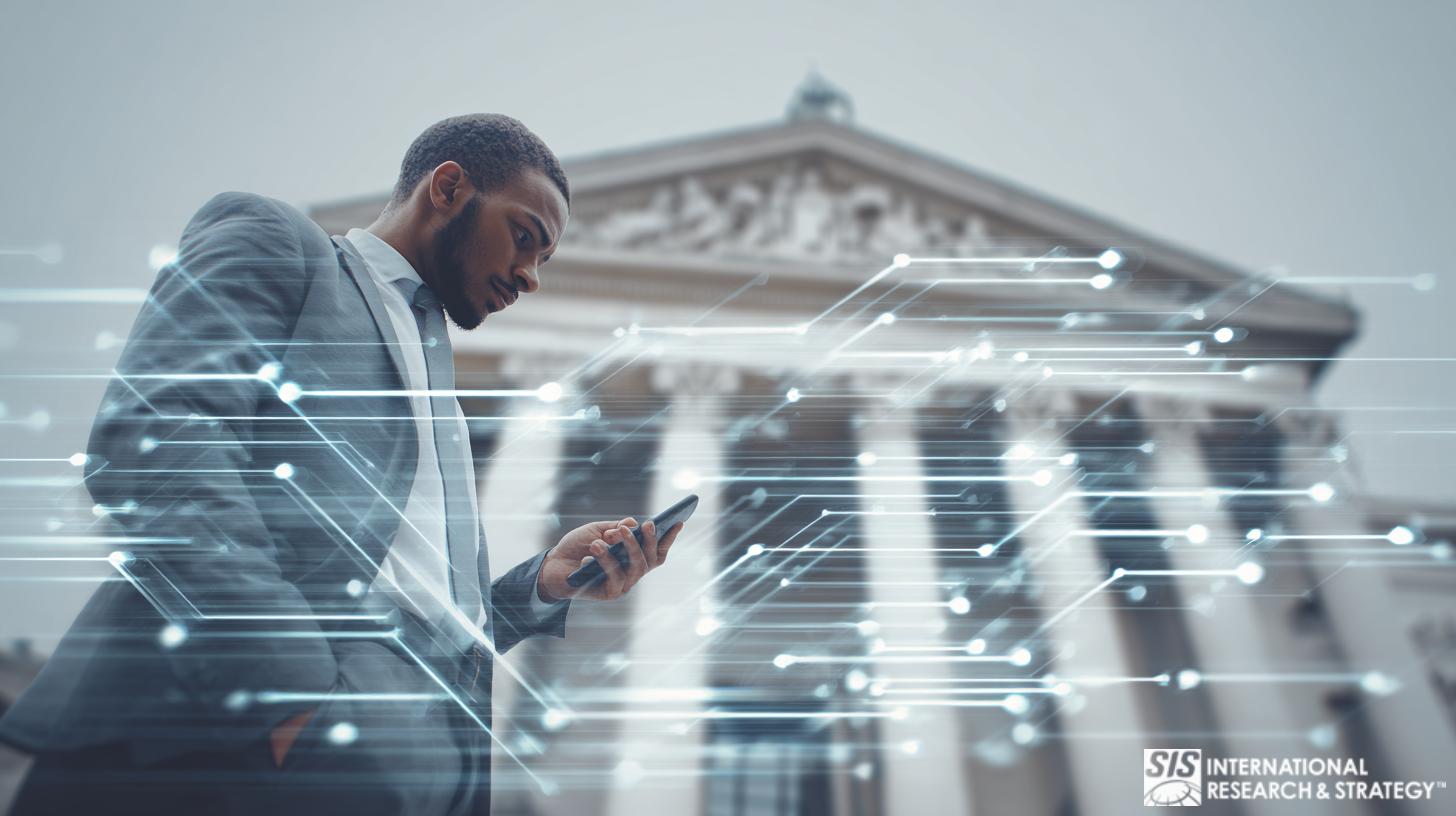
ไวรัสที่แตกต่างกันโดยสิ้นเชิง
ภาพรวมโดยย่อของการต่อสู้ที่กำลังดำเนินอยู่เพื่อหยุดยั้งกระแสการบุกรุกทางไซเบอร์ในภาคการดูแลสุขภาพ
In addition to subversive hacking in the business world, where private information can be compromised and sensitive company data absconded with, cybersecurity measures are now employed to negate the effects of hacking by foreign entities, used a political weapon. It is an increasingly serious global problem, and one that has necessitated the implementation of advanced cybersecurity methodologies to counteract the increasingly sophisticated capabilities of hackers to subvert these very systems.
“In recent years, cybersecurity has been a growing concern in healthcare, with high-profile cyber-attacks and vulnerabilities causing disruptions for insurers, hospitals, and medical device makers. The stakes for patients are high too as patient data could be lost or tampered with, hospital services interrupted, or patients harmed through attacks targeting specific devices … “ 1
การแทรกแซงของรัฐบาลเพื่อต่อสู้กับอาชญากรรมไซเบอร์
The rapid digitization of the healthcare industry makes this sector particularly vulnerable to cyber attack, and this fact has not been lost on the US Congress. The House Energy and Commerce Committee recently convened to address cybersecurity in the health sector. Information Sharing and Analysis Centers (ISACS) may be key in providing enhanced security for healthcare providers and in thwarting efforts of would-be cyber attackers.
Through the interactive efforts of the 24 organizations that comprise the National Council of ISACs (NCI), great efforts are being made to “maximize information flow across the private sector critical infrastructures and with government. Critical infrastructure sectors and subsectors that do not have ISACs are invited to contact the NCI to learn how they can participate in NCI activities.”2
It is, of course, a Herculean undertaking to strengthen the partnership between public and private entities in healthcare with regard to cybersecurity, considering the myriad industries and agencies of government that are responsible for regulating and delivering said healthcare. Congress has been encouraged to provide tax breaks and other incentives to prompt companies to get involved with the ongoing effort of ISACs.
การมีส่วนร่วมที่ไม่ดีขัดขวางการดำเนินการรักษาความปลอดภัยทางไซเบอร์
Unfortunately, poor participation rates among healthcare facilities have been a persistent problem in the ongoing efforts to implement effective cybersecurity measures across the sector. According to Terry Rice, vice president of IT risk management and chief information security officer at Merck, “companies may be hesitant to share information within an ISAC if they fear the information will not remain confidential to its members.”3
“I think the most shocking statistic was really the fact that 40% of the individuals at the top of an organization–executives like CEOs and CIOs, and even board members–didn’t feel personally responsible for cybersecurity or protecting the customer data.” Dave Damato, Chief Security Officer at Tanium, on CNBC’s Squawk Boxพูดถึงความปลอดภัยทางไซเบอร์ในอุตสาหกรรมการดูแลสุขภาพ 13
อาชญากรรมไซเบอร์มีค่าใช้จ่ายสูงในด้านการดูแลสุขภาพ

Aside from the obvious threat of compromised patient information and other incidents of data theft, failures of cybersecurity are incredibly expensive, to the tune of $6.2 billion annually, according to a 2016 research project conducted by the Poneman Institute. Insights revealed in their studies revealed that “nearly 90 percent of the healthcare organizations … had endured a data breach during the previous two years. Forty-five percent had more than five data breaches in that period, with the average cost of a cyber attack totaling $2.2 million. The data contained in electronic health records (EHRs) is often cited as the reason healthcare is such an attractive target in the eyes of a hacker.”4
As secure as people like to believe their health information is in the possession of their doctor’s office or hospital, it is often not the case. The ongoing digitization of health records has been an expensive proposition for the healthcare industry. Securing all that information is another monumental expense, and sometimes this part of the cybersecurity equation has been neglected in the interest of cost-savings, or just by the large-scale nature of the overall endeavor.
ลักษณะที่ทำกำไรของการโจรกรรมทางไซเบอร์ในการดูแลสุขภาพ
Of course, health records are a hot commodity on the black market, and they can fetch top dollar from parties seeking to obtain personal information, billing addresses, and credit card numbers. Hacking can be a very lucrative enterprise, indeed. Consider this example. “Hackers made off with more than 2.2 million patient records from Fort Myers, Florida-based 21st Century Oncology in March of 2016. A month later, someone stole a laptop with 205,748 unsecured patient records on it from Premier Healthcare, LLC.” 5
การปรากฎตัวของแรนซัมแวร์
แรนซัมแวร์เป็นคำศัพท์ใหม่สำหรับคนส่วนใหญ่ โดยเริ่มคุ้นเคยกับการโจมตีของ WannaCry ที่เกิดขึ้นทั่วโลก ทำลายระบบโครงสร้างพื้นฐานที่สำคัญ และเรียกค่าไถ่ทางการเงินจำนวนมากจากผู้ที่ตกเป็นเหยื่อของความวิตกกังวลและการสูญเสียข้อมูลลักษณะเฉพาะของการโจมตีดังกล่าว อุตสาหกรรมการดูแลสุขภาพโดยเฉพาะอย่างยิ่งมีความเสี่ยงต่อการรุกรานของแรนซัมแวร์
“โรงพยาบาลถือเป็นเครื่องหมายที่สมบูรณ์แบบสำหรับการขู่กรรโชกประเภทนี้ เนื่องจากโรงพยาบาลให้การดูแลที่สำคัญและอาศัยข้อมูลล่าสุดจากบันทึกผู้ป่วย หากไม่มีการเข้าถึงประวัติยา คำสั่งการผ่าตัด และข้อมูลอื่นๆ อย่างรวดเร็ว การดูแลผู้ป่วยอาจล่าช้าหรือหยุดชะงัก ซึ่งทำให้โรงพยาบาลมีแนวโน้มที่จะจ่ายค่าไถ่มากกว่าเสี่ยงต่อความล่าช้าที่อาจส่งผลให้เกิดการเสียชีวิตและการฟ้องร้อง” 6
Ransomware malware, in effect, locks up a computer and makes data inaccessible unless a ransom is paid to the perpetrator. Usually, this payment is made in the form of Bitcoin. In most instances, a time limit is established for the ransom to be paid, otherwise the computers data will be destroyed. Though most stricken parties don’t pay the ransom, enough do to make it a particularly lucrative criminal enterprise.
The healthcare industry has been vulnerable to ransomware attacks because, surprisingly, many hospitals have taken inadequate steps to prevent cybersecurity breeches. Instead, most hospitals have focused their primary concern on meeting HIPAA compliance and meeting federal guidelines to ensure the security of patient information. Ultimately, most employees in healthcare are simply not trained well enough to recognize and thwart cyber attacks before they occur. Even when adequate training and cybersecurity measures are in place, it is a continuous challenge to outwit perpetrators who constantly remain one step ahead of the game.
อุปกรณ์ IoT ก็มีความเสี่ยงเช่นกัน
To add a layer of seriousness to the present situation, cyber attacks can affect not only computers, but devices that are connected to them, as well. Medical tools, heart and glucose monitors are but a few examples of devices vulnerable to cyber attack. Vice-President Dick Cheney famously demanded that his pacemaker be made safe from cyber attack, lest those with ill-intent not manipulate the function of his device remotely. Quite frankly, interference with such devices can be deadly for the patients who depend on them to live.
ตัวอย่างของการแฮ็กทางการแพทย์ “ในการแฮ็กที่ใช้อยู่ในปัจจุบันที่เรียกว่า MedJack ผู้โจมตีจะฉีดมัลแวร์เข้าไปในอุปกรณ์ทางการแพทย์เพื่อกระจายไปทั่วเครือข่าย ข้อมูลทางการแพทย์ที่ค้นพบในการโจมตีประเภทนี้สามารถนำไปใช้ในการฉ้อโกงภาษีหรือการขโมยข้อมูลส่วนบุคคล และยังสามารถใช้เพื่อติดตามใบสั่งยาที่ยังใช้งานอยู่ ซึ่งช่วยให้แฮกเกอร์สามารถสั่งยาออนไลน์เพื่อขายบนเว็บที่มืดได้” 7
-No patients have, as far as I know, been killed due to a hacked pacemaker, but patients have been killed due to malfunction[s] of their medical devices, configuration errors, and software bugs. This means that security research in the form of pre-emptive hacking, followed by coordinated vulnerability disclosure and vendor fixes, can help save human lives.” Marie Moe นักวิจัยด้านความปลอดภัยของ SINTEF ใน “เอาเลยแฮกเกอร์ หักอกฉัน” (มีสาย)13
ขณะนี้ FCC ได้แนะนำให้ซัพพลายเออร์ IoT ของอุปกรณ์ทางการแพทย์สร้างมาตรการรักษาความปลอดภัยไว้ในผลิตภัณฑ์ที่พวกเขาผลิต คำสำคัญที่มีการแนะนำ จริงๆ แล้ว การดำเนินการตามหลักปฏิบัติด้านความปลอดภัยและข้อกำหนดบังคับสำหรับผู้ผลิตเหล่านั้นถือเป็นความพยายามที่ใช้เวลานาน นอกจากนี้ เครือข่ายที่ได้รับมอบหมายให้ถ่ายทอดข้อมูลระหว่างอุปกรณ์และฐานข้อมูลยังมีความต้องการที่สำคัญสำหรับการดำเนินการและการตรวจสอบความปลอดภัยทางไซเบอร์อีกด้วย
ประธานาธิบดีคนใหม่ ระเบียบใหม่
There was much speculation as to how the Trump administration would address issues of cybersecurity. On May 11, 2017, the president signed an executive order that mandated a review of the nation’s overall abilities to combat criminal cyber-activity. The order places the brunt of responsibility concerning cybersecurity on federal agencies which were to do risk assessments and turn in their respective reports within 90 days. Additional reports examining critical infrastructure risks were due six months after the president’s order was issued.
“คำสั่งดังกล่าวเรียกร้องให้มีการตรวจสอบภัยคุกคามที่เกิดจากบ็อตเน็ต ซึ่งกำหนดเป้าหมายเว็บไซต์ที่มีปริมาณการใช้สแปมที่สร้างขึ้นโดยอัตโนมัติ ที่ มิไรบอทเน็ต เป็นผู้รับผิดชอบต่อปัญหาอินเทอร์เน็ตขัดข้องอย่างมากในปีที่แล้ว แต่ Access Now กล่าวว่าคำสั่งดังกล่าวควรกล่าวถึงกระบวนการของรัฐบาลในการเปิดเผยช่องโหว่และการตอบสนองต่อการละเมิดข้อมูล”
There is no overall preventative measure or measure that can eliminate the risk of cyber attacks. Rather, hospitals, clinics, and private practices can only hope to work together and manage the continuous risks in the interest of protecting the private information and the general safety of their patients. Concurrently, continuous technological advancements will hopefully address the vulnerability of medical devices and computer networks.
ความพยายามในการควบคุมผลกระทบที่อาจเกิดขึ้นจากอาชญากรรมในโลกไซเบอร์ในภาคสุขภาพและที่อื่นๆ ขยายไปไกลเกินกว่าสหรัฐอเมริกา ขณะนี้ความพยายามระดับโลกกำลังดำเนินการเพื่อหยุดยั้งการโจมตีทางไซเบอร์ทั่วโลก หรืออย่างน้อยก็เพื่อลดผลกระทบของสิ่งที่ดูเหมือนจะเป็นความพยายามที่ไม่มีวันสิ้นสุดในนามของอาชญากรไซเบอร์ในการแทรกซึมระบบการดูแลสุขภาพ และสร้างความหายนะและขู่กรรโชกในทุกที่ที่เป็นไปได้ ไปสู่จุดจบอันเลวร้ายอันใด
แรงจูงใจทางการเมืองสำหรับการโจมตีทางไซเบอร์

With the hostile political climate that exists between North Korea and virtually every other country in the civilized world, it is not surprising that the rogue nation has been cited as a probably offender in the recent WannaCry ransomware attacks, and other ill-willed endeavors undertaken for political reasons and for the purposes of financial extortion.
“นักวิจัยด้านความปลอดภัยทางไซเบอร์พบเบาะแสทางเทคนิคที่พวกเขากล่าวว่าสามารถเชื่อมโยงเกาหลีเหนือกับการโจมตีทางไซเบอร์ “แรนซัมแวร์” ของ WannaCry ทั่วโลกที่... ติดเชื้อมากกว่า 300,000 เครื่องใน 150 ประเทศ. Symantec and Kaspersky Lab said … some code in an earlier version of ซอฟต์แวร์ WannaCry ยังปรากฏในโปรแกรมที่ใช้โดย Lazarus Group ซึ่งนักวิจัยจากหลายบริษัทระบุว่าเป็นปฏิบัติการแฮ็กที่ดำเนินการโดยเกาหลีเหนือ” 10
ไม่ใช่ผู้เชี่ยวชาญทุกคนที่เชื่อว่าการโจมตีของแรนซัมแวร์ WannaCry มีสาเหตุมาจากเหตุผลทางการเงิน บางคน เช่น Matthew Hickey จาก Hacker House ที่ปรึกษาด้านไซเบอร์ของอังกฤษ เชื่อว่าผู้กระทำผิดหวังเพียงแค่ "สร้างความเสียหายให้มากที่สุดเท่าที่จะเป็นไปได้" นี่เป็นกรณีที่เกิดขึ้นอย่างแน่นอนในประเทศที่ได้รับผลกระทบจากการโจมตีมากที่สุด รวมถึงอินเดีย ไต้หวัน ยูเครน และรัสเซีย
บางคนเช่นเดียวกับผู้นำรัสเซีย วลาดิมีร์ ปูติน ตำหนิ NSA สำหรับสิ่งที่เขาอ้างว่าเป็นบทบาทของพวกเขาในการโจมตีแรนซัมแวร์ WannaCry คิดว่าเทคโนโลยี WannaCry “มาจากเครื่องมือที่รั่วไหลออกมา โดยใช้ประโยชน์จากข้อบกพร่องด้านความปลอดภัยใน Windows ที่ดูเหมือนว่าจะมีต้นกำเนิดมาจาก NSA “เราตระหนักดีว่าจีนี่โดยเฉพาะอย่างยิ่งที่สร้างขึ้นโดยหน่วยสืบราชการลับ อาจเป็นอันตรายต่อผู้เขียนและผู้สร้างของพวกเขาเอง หากพวกเขาถูกปล่อยออกจากขวด” ปูตินในกรุงปักกิ่งกล่าว ตามรายงานของ Tass สำนักข่าวของรัฐรัสเซีย- 11
“This next president is going to inherit the most sophisticated and persistent cyber espionage cultures the world has ever seen, He needs to surround himself with experts that can expedite the allocation of potent layers of next-generation defenses around our targeted critical infrastructure silos.” James Scott, Senior Fellow, Institute for Critical Infrastructure Technology 14
แนวโน้มในการต่อสู้กับการโจมตีทางไซเบอร์ในภาคสุขภาพ
Obviously, the threat of cybersecurity breaches across all sectors of business and industry will not abate. In healthcare, there will be an ongoing and incessant need to improve technology and overall vigilance to avoid disastrous incidents in the future. Certain protective trends are emerging that might be seen as the future of cybercrime deterrence in healthcare.
At the top of the list is an increasing migration to cloud-based information security tools. This move “will allow the tools to be updated more dynamically to address zero-day type malware. This move to the cloud should ultimately make it more economical to make these tools available to all healthcare providers – large and small.” 12
In addition, the healthcare industry will be forced to encourage increased information sharing and collaboration across health networks and between facilities. This mutual cybersecurity effort will be difficult to instigate as health institutions are often quite insular by nature. It is predicted that this sharing of information will reach beyond healthcare to include many sectors of business and institutional endeavors to minimize risks for all involved.
Ultimately, the effort to negate the dangers of cybersecurity breaches, ransomware, and new and emerging threats in this arena will come down to education and awareness on all employee levels in healthcare and beyond. When everyone is well-educated and made to see warning signs of cyber-risks and what they can do to be part of an overarching effort to stem the tide of cyber-incursion, the healthcare industry and all protectors of civilized information sharing around the globe will continue to make meaningful strides towards limiting the damaging effects of cybercrime in all sectors.
AI-Driven Website Security: WP Safe Zone for Healthcare
In the healthcare sector, where sensitive patient data is a prime target for cyberattacks, robust website security is critical. The rise of AI in cybersecurity is providing powerful solutions to combat these threats. One standout example is the WP Safe Zone plugin, tailored for WordPress websites.
WP Safe Zone utilizes artificial intelligence to protect websites from malware, brute force attacks, and unauthorized access. Its AI algorithms constantly monitor and adapt to emerging threats, ensuring real-time protection for healthcare organizations’ online platforms.
As cyber risks in healthcare continue to grow, tools like WP Safe Zone demonstrate how AI can safeguard critical systems, ensuring both data security and compliance with strict regulations.
เราสามารถช่วยรักษาความปลอดภัยทางไซเบอร์ของคุณได้
SIS International Research ใช้เวลาหลายทศวรรษในการโต้ตอบกับอุตสาหกรรมการดูแลสุขภาพในหลายระดับ ตั้งแต่กิจการครอบครัวอิสระ ไปจนถึงเครือข่ายด้านสุขภาพแบบหลายระดับและเสาหิน ความเข้าใจที่เป็นหนึ่งเดียวของเราเกี่ยวกับความท้าทายที่ธุรกิจและสถาบันต่างๆ ในภาคการดูแลสุขภาพต้องเผชิญนั้นไม่มีใครเทียบได้ เราจัดทำการวิจัยและข้อมูลข่าวสารเกี่ยวกับผู้มีส่วนได้ส่วนเสีย[/fusion_text][fusion_text]
โซลูชั่นของเราประกอบด้วย:
ปัจจุบัน ภัยคุกคามทางไซเบอร์มีความซับซ้อนเพิ่มขึ้นซึ่งมุ่งเป้าไปที่สถาบันดูแลสุขภาพที่ได้รับความเคารพนับถือมากที่สุดและผู้ป่วยที่พวกเขาให้บริการ เราจึงพิจารณาบทบาทของเราด้วยความจริงจังในระดับสูงสุด ในฐานะบริษัทที่ภาคภูมิใจในการเข้าใจถึงความสำคัญและลักษณะที่หลากหลายของอุตสาหกรรมการดูแลสุขภาพ เราจะยังคงให้บริการแนวทางปฏิบัติ สิ่งอำนวยความสะดวก และองค์กรที่เกี่ยวข้องกับสุขภาพต่อไป ด้วยความสามารถในการวิจัยคุณภาพสูงและครอบคลุมเช่นเดียวกับลูกค้าของเรา คาดหวังและความต้องการ ด้วยวิธีนี้ เราหวังว่าจะทำหน้าที่ในส่วนของเราในการช่วยให้ชุมชนทางการแพทย์เข้าใจและต่อสู้กับภัยคุกคามจากการโจมตีทางไซเบอร์ที่เกิดขึ้นจริงและร้ายแรงในภาคการดูแลสุขภาพ
ทรัพยากรต่อไปนี้ถูกนำมาใช้ในการรวบรวมงานวิจัยนี้:
http://www.raps.org/Regulatory-Focus/News/2017/04/04/27267/Cybersecurity-House-Committee-Looks-to-Build-on-Public-Private-Partnerships/#sthash.x4Xvdf6q.dpuf
https://www.nationalisacs.org/
http://www.raps.org/Regulatory-Focus/News/2017/04/04/27267/Cybersecurity-House-Committee-Looks-to-Build-on-Public-Private-Partnerships/#sthash.x4Xvdf6q.dpuf
https://learningnetwork.cisco.com/blogs/talking-tech-with-cisco/2017/03/21/cybersecurity-and-healthcare-a-forecast-for-2017
https://learningnetwork.cisco.com/blogs/talking-tech-with-cisco/2017/03/21/cybersecurity-and-healthcare-a-forecast-for-2017
https://www.wired.com/2016/03/ransomware-why-hospitals-are-the-perfect-targets/
https://www.wired.com/2017/03/medical-devices-next-security-nightmare/
https://techcrunch.com/2017/05/11/trump-signs-long-delayed-executive-order-on-cybersecurity/
http://www.healthcareitnews.com/news/top-10-cybersecurity-must-haves-2017
http://www.dingit.tv/highlight/1441974?utm_source=Embedded&utm_medium=Embedded&utm_campaign=Embedded
www.healthcareitnews.com/blog/3-trends-shaping-future-cybersecurity
https://www.forbes.com/sites/danmunro/2016/12/18/top-ten-healthcare-quotes-for-2016/#5f47fb6b127f
http://www.goodreads.com/quotes/tag/cyber-security



